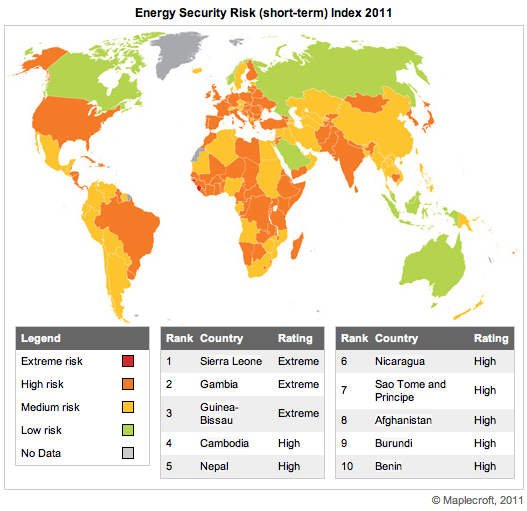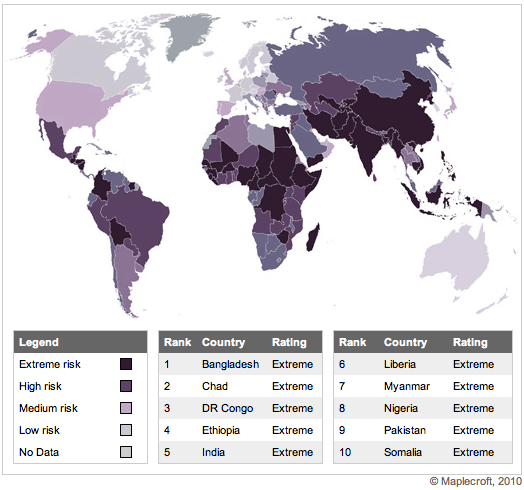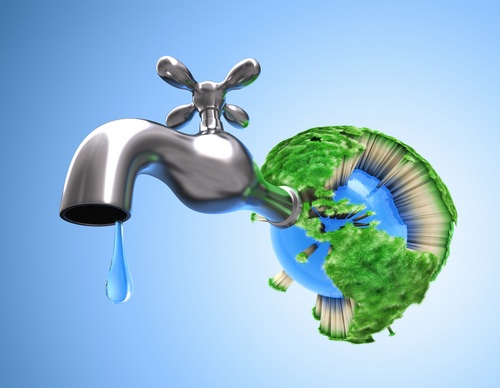One year ago today, there was an explosion on BP’s Deepwater Horizon oil rig in the Gulf of Mexico that ignited a fire that killed 11 workers. The inferno blazed for two more days before the giant metal structure succumbed, collapsing to the seabed and triggering the largest environmental disaster in the history of the United States.
We didn’t know the full extent of the spill for a few more weeks, but now that we do, we will be spending years trying to learn all the lessons of this horrible catastrophe.
Today, on the anniversary of what started it all, I spoke about the fallout of the Gulf spill with Bob Glasser, or as he’s better known in the industry, “BI Bob,” managing director and head of the business interruption and insurance claims practice at BDO Consulting.

Oil on a beach in Gulf Shores, Alabama, June 12, 2010
Jared Wade: What was your immediate reaction last April when you actually started to understand the gravity of the Deepwater Horizon explosion?
Bob Glasser: We thought that due to an explosion on the oil rig, there would have been a property damage that could have been a peril that would have triggered a lot of insurance claims under contingent business interruption. Everyone thought that was the tie-in to trigger their policies. But apparently, I mean I have to be frank, I have not been involved in one insurance claim associated with this catastrophic event — which is just unbelievable. I’ve only been involved with filing business claims against the Gulf Coast Claims Facility.
Many companies, the big hotel chains, for example, had coverage for all this, but their policies didn’t respond due to exclusions. When you’re dealing with your major hotel chains that have extremely sophisticated manuscript policies, I’ve spoken with them and we’re all scratching our head about how they could have had different language in their policy that would have covered this. It just ended up being not a coverable event — as was the volcanic eruption [last summer]. It was a catastrophe in itself that ended up being a non-coverable event because there was no property damage and there were no real triggers that gave rise to getting coverage for a business interruption loss.
Two unique situations within one year that no one would have ever anticipated and, yet, the insurance industry went unscathed.
Wade: Would you say then that this is a wake-up call for risk managers to some of these so-called “black swan” events? The main thing with insurance is that it gives you the peace of mind that if something goes wrong, you have a policy for that. But if two things can happen in one year where the language is such that it isn’t covered even though it was related to perils you thought you had coverage for, doesn’t that stress that risk managers need to be a little more creative in negotiations to get better language?
Glasser: Correct. Broader language and possibly fewer exclusions — going to, perhaps, a more “all risk”-type policy. And for all we know, policies in 2011 and 2012 will, in certain industries, have language dealing with volcanic eruption and how their policy will respond to it. If you’re willing to pay a premium to transfer the risk associated with loss of business — you always have to balance how much the premium is worth to transfer that risk to someone else — if companies deem that that balance is worth it, insurance companies surely will contemplate and look into covering that event.
Same thing with the Gulf oil spill. There may be broader language in future policies to talk about oil spills. Because when people contemplated pollution exclusions, they were really thinking more of sewage or other things happening over time. Because the impact on tourism wasn’t an “event,” it got excluded. But [the Gulf spill] was certainly an event on one day where, all of the sudden over a number of months, millions of gallons of oil went to the Gulf coast.
So you could have a redefinition of what is a covered peril with either broader language or specific language that addresses an oil spill and a volcanic eruption. And then, when the next unusual thing comes about, there will be an extension of a coverage covering that next unique thing.
Wade: So it almost seems that these insurance policies are sort of standing on the shoulders of what came before them? These events are unforeseeable as far as falling under a broad coverage that a lot of companies would have demand for. So when something strange happens, it sort of wakes everyone up?
Glasser: Certainly. Look at 9/11. And also what is happening in the Middle East and Northern Africa. Who would have thought so many countries within such short a period of time would have such political unrest and try to overthrow the leader in power. So it may open up the eyes of many different companies that may not have cared about political risk insurance. But now, maybe they get products from Egypt. Maybe they get products from Saudi Arabia — other than oil. And maybe they need coverage now. So, yes, as things happen, coverage evolves and capacity opens up to cover insureds with a desire to buy insurance.
Wade: So then does it behoove risk managers to try to think ahead to foresee everything that could possibly go wrong and then get that coverage before it becomes in demand? You could try to negotiate any coverage at any time, right? It’s only once everyone else catches on that it’s going to become expensive.
Glasser: Correct. It always makes sense. And this is where the risk manager has evolved into a much more important role in corporations and organizations. It’s not strictly looking at whether property gets damaged or if someone sues me for D&O coverage or if somebody slips and falls. The risk manager understands, through discussions with their broker, the plethora of coverage available. So it behooves the risk manager to be the facilitator within an organization. To meet with financial management, operational management, logistics management and all the key areas of an organization [and become] the central focus for determining “What happens here? What happens if this goes wrong? What if this happens?”
I recommend to my clients to have these discussions, in major meetings, about whether or not anyone has ever thought about what happens if this one key component becomes unavailable? Or something happens to the shipping lanes in Japan? Or there’s a shortage of containers? Or there’s a Middle East war? Whatever it is, and it may sound silly, but when you come up with the most obscure type of event, you may come up with some very good discussions among senior management as to how you handle it.
Wade: Would you say, then, that the primary duty of the risk management profession now is to not necessarily be the person that can look at all the known perils and find a way to mitigate them but to be a person who can be more of a creative thinker and connect the dots?
Glasser: Absolutely correct. He needs to be a creative thinker to get the strategic and, I’ll say, “catastrophic” thought process going in senior management of an organization so they all think out of the box about what could happen. And that includes thinking about what could happen to your suppliers.
You might not have any physical damage. You could be one big, very-large manufacturer or distributor in the U.S. and you’re not prone to earthquakes, to hurricanes, to tornadoes. You’re not near a river so you’re not going to have flooding. But you source components across the world so now you have to think about what could happen to my major suppliers. Because they’re in Japan. They’re in the Middle East. They’re in Haiti. Wherever. So you need to not only think of you and what could go wrong; you need to get senior management to think about what could happen to your suppliers.
And then on the other hand, you need senior management to think about what could happen to your customers.
If you’re a chemical manufacturer and 40% of your chemicals go into one industry or one customer, you need to think about, what if something happens to that customer? What’s that going to do to my business? If you sell to Walmart — Walmart’s huge, it’s the largest retailer out there — what if something happens to Walmart? Your stream of customers just dried up. It’s probably an unlikely case because nothing’s going to happen to Walmart, but my point is that the risk manager’s role has become more and more important and valued within the C-suite, if you will.
Wade: After the Gulf oil spill, I remember reading about how seafood companies, and even restaurants and commercial fishermen, up in Maine and Massachusetts were dealing with the fallout. It seems that everything has shockwaves now.
Glasser: I’m working with a major food distributor where we were helping them to determine, identify and quantify lost margins due to seafood sales. Not that their seafood sales decreased dramatically, but their profitability decreased dramatically because there was a substantial increase in seafood costs that they couldn’t pass along to customers.
The reality of it is that it did have a global effect. It also had a global effect in tourism. I know in dealing with some major hotels on the west coast of Florida, they had conversations with travel brokers and agents who basically told them that foreign travelers just presumed that all of Florida was covered with oil. And they just said “we’re not going to vacation there this year.”
There were just so many ramifications to what happened in the Gulf Coast.



 As the report states, there are more than 200 million children working throughout the world, many full-time. Of these, 126 million are exposed to hazardous forms of child labor. As we have seen, many big-name companies have been accused of using child labor, and though they’ve taken many steps to correct their ethical violations, the reputation damage still lingers — and may do so forever.
As the report states, there are more than 200 million children working throughout the world, many full-time. Of these, 126 million are exposed to hazardous forms of child labor. As we have seen, many big-name companies have been accused of using child labor, and though they’ve taken many steps to correct their ethical violations, the reputation damage still lingers — and may do so forever.